
Journal of Contemporary Physics-Armenian Academy of Sciences
Scope & Guideline
Illuminating the Latest Developments in Physics and Astronomy.
Introduction
Aims and Scopes
- Experimental Physics:
The journal publishes research that involves innovative experimental methods and setups, particularly in areas like particle physics, material science, and optics. - Theoretical Physics:
A significant portion of the journal's content is dedicated to theoretical studies, including quantum mechanics, statistical mechanics, and advanced mathematical models. - Nanotechnology and Materials Science:
Research on nanomaterials, their synthesis, characterization, and applications is a core focus area, reflecting the journal's commitment to exploring cutting-edge materials. - Optics and Photonics:
The journal covers advancements in optical technologies, including laser applications, spectroscopy, and optical materials, highlighting their relevance in contemporary physics. - Medical Physics and Isotope Production:
Papers related to the production of medical isotopes and their applications in medicine demonstrate the journal's interdisciplinary approach and commitment to practical applications of physics. - Electromagnetic Theory and Applications:
Research on electromagnetic fields, their interactions with matter, and applications in various technologies is a consistent theme in the journal's publications.
Trending and Emerging
- Nanostructured Materials and Sensors:
There is an increasing trend in research on nanostructured materials, particularly their use in sensors and detection systems, reflecting the growing importance of nanotechnology. - Quantum Computing and Quantum Information:
Emerging topics related to quantum computing, quantum states, and their applications indicate a growing interest in quantum technologies and their theoretical foundations. - Medical Physics Applications:
The publication of papers related to the production of medical isotopes and their applications in diagnostics and treatment highlights a significant trend towards the intersection of physics and medicine. - Advanced Electromagnetic Applications:
Recent papers emphasize advanced applications of electromagnetic theory, including novel detectors and imaging techniques, which are becoming increasingly relevant in both research and industry. - Machine Learning in Physics:
The integration of machine learning techniques in experimental and theoretical physics research is gaining traction, showcasing the journal's openness to interdisciplinary approaches.
Declining or Waning
- Classical Mechanics Applications:
Research focused on classical mechanics applications appears to be declining, indicating a possible shift towards more modern physics topics, such as quantum mechanics and nanotechnology. - Traditional Solid-State Physics:
Traditional solid-state physics studies, particularly those that do not incorporate advanced materials or novel techniques, are less frequently represented in recent publications. - Optical Properties of Bulk Materials:
Studies centered on the optical properties of bulk materials, as opposed to nanostructured or composite materials, seem to be waning, reflecting a broader trend towards more complex systems. - Thermal Properties in Classical Systems:
Research focusing solely on classical thermal properties without integration into nanotechnology or advanced materials has seen reduced representation, indicating a shift in interest.
Similar Journals

INDIAN JOURNAL OF PHYSICS
Catalyzing Discussions in the Realm of PhysicsINDIAN JOURNAL OF PHYSICS, published by the Indian Association for Cultivation of Science, serves as a pivotal platform for researchers and scholars in the field of physics and astronomy. With its ISSN 0973-1458 and E-ISSN 0974-9845, this journal is committed to presenting innovative research and developments across diverse topics in physics, covering both theoretical and experimental studies. The journal has made its mark in the academic community, evidenced by its classification in the Q3 category within the Physics and Astronomy domain as of 2023, and ranks #100 out of 243 in the Scopus curated database, placing it in the 59th percentile. Spanning from 2005 to 2024, the INDIAN JOURNAL OF PHYSICS aims to foster knowledge exchange and stimulate discussions among physicists and scientific enthusiasts. Whether you are a researcher looking to publish your findings, a professional seeking updates in your field, or a student eager to explore varying aspects of physics, this journal is an invaluable resource contributing significantly to the understanding and advancement of physics in India and beyond.

European Physical Journal Plus
Catalyzing Progress in Fundamental and Applied SciencesThe European Physical Journal Plus, published by Springer Heidelberg, is a reputable open-access journal that serves as a vital platform for innovative research across various disciplines, including physics, astronomy, and chemical engineering. With an impressive impact factor reflected by its Q2 ranking in both Fluid Flow and Transfer Processes and Physics and Astronomy (Miscellaneous) categories, this journal plays a crucial role in disseminating high-quality research findings. Since its inception in 2011, it has fostered interdisciplinary collaboration and encourages the exploration of fundamental principles and applications. The journal also boasts a respectable Scopus rank, indicating its solid influence and reach within the scientific community. Researchers, professionals, and students alike will find the journal to be an essential resource for staying abreast of advancements and trends in these dynamic fields, while its open-access model ensures that valuable insights are accessible to a broader audience.
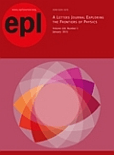
EPL
Connecting Minds, Inspiring Breakthroughs in AstronomyEPL, a prominent journal published by IOP Publishing Ltd, stands at the forefront of the field of Physics and Astronomy. With a history of impactful contributions stretching from 1986 to 2024, EPL serves as a dynamic platform for researchers to disseminate their pioneering findings and innovative ideas. The journal, with a current category ranking of Q2 among its peers and a competitive Scopus rank of #101 out of 243 in the general physics and astronomy category, reflects its substantial reputation and contribution to the scientific community. Although it operates under a traditional subscription model, EPL's reach is extensive, enabling access to a diverse readership that includes academicians, industry professionals, and students alike. By fostering interdisciplinary collaboration and promoting rigorous research, EPL continues to play a vital role in shaping the future of physics and astronomy.

Lithuanian Journal of Physics
Nurturing Knowledge for Tomorrow's PhysicistsWelcome to the Lithuanian Journal of Physics, an esteemed publication helmed by the Lithuanian Physical Society, dedicated to advancing the field of physics and astronomy. Established in 2008 and continually publishing insightful research through 2024, this journal aims to provide a platform for high-quality scholarly articles that contribute to the understanding of various physical phenomena. With a steady presence in the academic landscape, the journal is currently ranked in the fourth quartile of the Physics and Astronomy category and is positioned at the 18th percentile in its Scopus ranking, reflecting its niche focus and accessibility for researchers and students alike. Although currently not operating under an open access model, the journal remains a vital resource for professionals seeking to stay informed on the latest developments in the field. The Lithuanian Journal of Physics invites contributions that inspire collaboration and innovation in physical sciences, making it an invaluable resource for the global scientific community seeking to expand knowledge within this dynamic field.
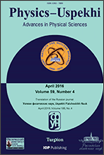
PHYSICS-USPEKHI
Fostering Collaboration in the Heart of PhysicsPHYSICS-USPEKHI, published by Uspekhi Fizicheskikh Nauk, is a prominent peer-reviewed journal in the field of physics and astronomy, reaching researchers and professionals since its inception in 1993. With an ISSN of 1063-7869 and an E-ISSN of 1468-4780, this esteemed journal has been classified as Q2 in the Physics and Astronomy category based on the 2023 quartiles, ranking 74 out of 243 journals in its Scopus classification, placing it in the 69th percentile. Although currently not an open access journal, it provides invaluable insights and advancements in the field, fostering an environment for scholarly exchange and collaborative research. Based in Moscow, Russia, PHYSICS-USPEKHI continues to shape the landscape of theoretical and experimental physics, inviting submissions that contribute to its rich legacy of high-impact scientific discourse.

Frontiers of Physics
Exploring New Horizons in Physics InnovationFrontiers of Physics, published by Higher Education Press, is a premier open-access journal dedicated to fostering innovative research and excellence within the field of physics. With an ISSN of 2095-0462 and an E-ISSN of 2095-0470, this rapidly growing journal has established itself as a valuable platform for disseminating cutting-edge findings, covering a diverse range of topics from theoretical frameworks to experimental advancements. Notably, Frontiers of Physics has achieved an impressive Q1 ranking in the 2023 Scopus Quartiles for Physics and Astronomy, securing a competitive 5th out of 81 positions in its category, reflecting a high impact factor that underscores its importance to the scientific community. Since its inception in 2011 and continuing through 2024, the journal aims to bridge the gap between academia and industry, encouraging collaboration among researchers, professionals, and students alike. Its commitment to open access ensures that high-quality research is readily accessible, thereby promoting knowledge sharing and advancement in the global physics community. Explore the potential of your research in Frontiers of Physics, where the future of physics flourishes.

Russian Physics Journal
Advancing Knowledge in Physics and AstronomyRussian Physics Journal is a reputable publication in the field of Physics and Astronomy, published by SPRINGER. With its history dating back to 1990, it has provided a platform for disseminating significant research findings while fostering academic dialogue within the scientific community. The journal, identifiable by its ISSN 1064-8887 and E-ISSN 1573-9228, offers a diverse range of articles that cover various aspects of physics, although it currently holds a Q4 category ranking in the 2023 quartile system, placing it within the lower tier of its field. Researchers and students can benefit from its insights despite the journal's ongoing evolution, striving to improve its impact as it ranks #194 out of 243 in the General Physics and Astronomy category on Scopus. While the journal does not offer open access options, its archived content remains crucial for those seeking to enhance their understanding of contemporary physics challenges. Located at ONE NEW YORK PLAZA, SUITE 4600, NEW YORK, NY 10004, UNITED STATES, the Russian Physics Journal continues to play a role in the academic landscape, contributing to the body of knowledge that drives innovation and exploration in the physical sciences.
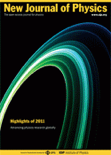
NEW JOURNAL OF PHYSICS
Empowering researchers with open-access knowledge.NEW JOURNAL OF PHYSICS, published by IOP Publishing Ltd, is a prestigious open-access journal that has been at the forefront of the physics community since its inception in 1998. With an impact factor that places it in the Q1 category of Physics and Astronomy (miscellaneous) and a commendable ranking of #49 out of 243 in the general physics and astronomy category according to Scopus, this journal is recognized for its significant contribution to advancing research in the field. The journal caters to a broad scope of topics, providing a platform for the dissemination of cutting-edge research findings and innovative theoretical explorations. Operating from the United Kingdom, it offers a truly international perspective, making its contents accessible and impactful to a global audience. With robust open-access options, the NEW JOURNAL OF PHYSICS ensures that research findings are freely available, promoting collaboration and knowledge sharing among researchers, professionals, and students alike. This commitment to accessibility, combined with its high-quality content, makes it an essential resource for anyone engaged in the physics community.
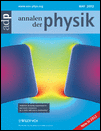
ANNALEN DER PHYSIK
Charting New Territories in Physics and AstronomyANNALEN DER PHYSIK, a prestigious journal published by WILEY-V C H VERLAG GMBH, stands as a cornerstone of the field of physics and astronomy since its inception in 1799. With an ISSN of 0003-3804 and an E-ISSN of 1521-3889, this journal provides a platform for innovative research and critical discourse across various domains of physics. Annalen der Physik is currently ranked in the Q2 category for general physics and astronomy, occupying rank #76 out of 243 in Scopus, placing it within the 68th percentile. This indicates its significant impact and the quality of research it publishes. Although the journal does not offer Open Access options, its robust historical lineage and ongoing contributions ensure that it continues to be an essential resource for researchers, professionals, and students alike. For those seeking to stay at the forefront of contemporary physics research, ANNALEN DER PHYSIK represents a vital source of knowledge, innovation, and scholarly communication.
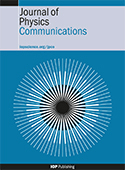
Journal of Physics Communications
Fostering Innovation in Physics and AstronomyJournal of Physics Communications, published by IOP Publishing Ltd, serves as a significant platform for the dissemination of innovative research in the realm of physics and astronomy. Since its inception in 2017, this Open Access journal has fostered a collaborative environment, allowing researchers, professionals, and students to share their findings and ideas without barriers. With an ISSN of 2399-6528, the journal has established its credibility in the academic community, achieving a ranking of Q3 in the 2023 category of Physics and Astronomy (miscellaneous), as well as a respectable position in Scopus with a rank of #122 out of 243 in its field. The journal's focus is on bridging theoretical concepts and practical applications, making it an essential resource for those engaged in the evolving landscape of physics. The Journal of Physics Communications not only aims to advance knowledge but also to inspire interdisciplinary collaboration, inviting contributions from diverse areas within physics. Authors and readers alike will find this journal particularly beneficial to stay updated on emerging trends and innovative research.